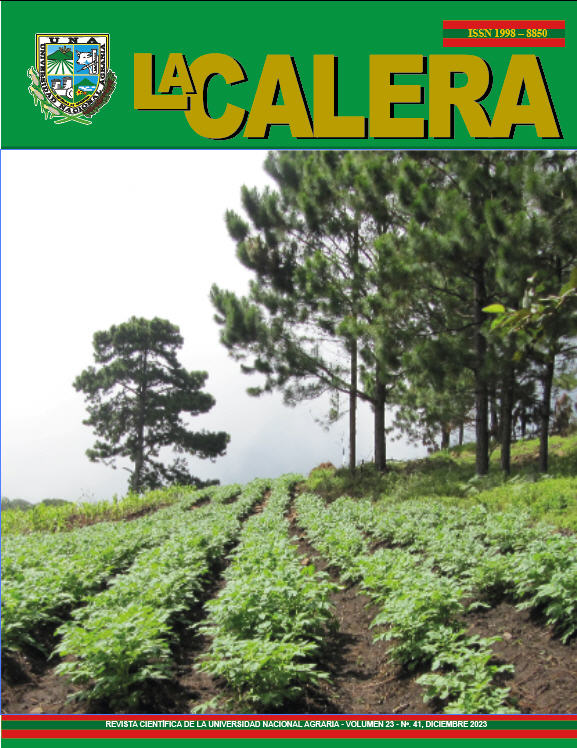Análisis agro socioeconómico de diez fincas en la comunidad El Quinal en Santa Teresa, Carazo, Nicaragua 2020 - 2021
DOI:
https://doi.org/10.5377/calera.v23i41.17031Palabras clave:
balance de caja, umbral de reproducción simple, productividad del trabajo, unidad de trabajo humanoResumen
Una de las estrategias de extensión e investigación es fortalecer las alianzas de gobiernos municipales, sociedad y academia. Esta investigación se realizó en la comunidad El Quinal, municipio de Santa Teresa-Carazo, Nicaragua. El objetivo fue realizar un análisis agro socioeconómico y técnico con el enfoque de sistema en diez fincas (sistema de producción). El diseño metodológico se realizó en cuatro fases, siendo la fase I la organización y revisión de fuentes bibliográficas, la fase II referida a la recolección de datos a través de entrevistas a productores en las fincas, la fase III orientada al análisis y procesamiento de datos y la fase IV corresponde a la presentación de informe final a los productores y autoridades locales. Estudio basado en un sistema local participativo no experimental. El universo muestral fue de 60 fincas, el tipo de muestra es no probabilística y por conveniencia, ya que se seleccionaron 10 fincas de acuerdo con las necesidades de investigación; las variables de estudio fueron socio económicas y técnico productivas; sus indicadores medidos son, escolaridad alcanzada, unidad de trabajo humano, mano de obra, gastos familiares, umbral de reproducción simple, rendimiento físico de la tierra, productividad del trabajo y balance de caja. Los resultado expresan qué el 45 % no logran terminar sus estudios de primaria, el promedio de la unidad de trabajo humano es de 3.27 días hombres, que hay un 50 % de mano de obra familiar aprovechada en las fincas, el principal gasto de la familia es la alimentación, el 70 % de las familias se encuentran en condiciones de subsistencia según indicador del umbral de reproducción simple, los principales cultivos es maíz, fríjol y sorgo y la mayoría no logran equiparar los rendimientos a nivel nacional, la productividad del trabajo logra superar el valor de pago de un día hombre y referente al balance económico siete de las 10 fincas tienen saldos negativos al final del año. En conclusión, solo el 30 % de las familias por finca logran satisfacer sus necesidades básicas y pueden reponer los medios de producción para el ciclo siguiente.
Descargas
384
EPUB 97
PDF 106
Publicado
Cómo citar
Número
Sección
Licencia
Derechos de autor 2023 Universidad Nacional Agraria

Esta obra está bajo una licencia internacional Creative Commons Atribución-NoComercial-CompartirIgual 4.0.

